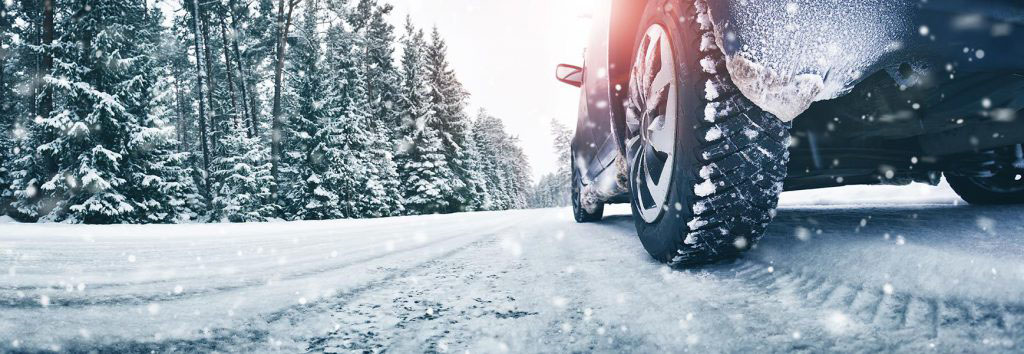10 Steps to Ensure Your Auto Repair Business Is “Shop Ready” for Winter
Before the seasonal onslaught of customers come through your door for maintenance checks, have you asked yourself if your auto repair business is “shop ready"?

While icy winter weather means more dings, scrapes and rear-ends for customers, don’t let it mean an accident in the shop. Learn about our 10 steps that will help ensure your business is prepared and successful for the winter season.
1. Check Your Equipment & OEM
Make sure your equipment is in proper working order, ensuring it can perform DTC scans and identify fault codes. Check the OEM for news and model alerts for each automobile that comes through your shop.
2. Note the Customer’s Vehicle’s Conditions
“Map out” the vehicle, noting the condition of the brakes, tires, battery, wiper blades, and the heating/defrost system. For most autos, batteries need to be replaced about every three years. Point this out to customers and explain the benefits of having a fresh battery – especially during the winter as cold weather is brutal on old batteries. When checking tire air pressure, don’t forget the spare.
3. Check the Customer’s Travel Plans
While checking the condition of the customer’s vehicle, make sure and ask your customers where they will be traveling during the holiday season. Are they going to a warmer or cooler climate? The oil currently in your customer’s car may not perform as well if they’re planning to visit Aunt Edna in southern Florida or their cousins in the Rocky Mountains.
4. Keep a Tip-Top Shop
Avoid using space heaters at all lengths. If it’s absolutely necessary, keep them away from paper, rags, or anything flammable. When plugging into electrical outlets, ensure not to overload the current and keep cords from being pinched or having objects moved or left on them.
Even without a heat source, improperly disposed-of oily rags present a major fire risk. If left in a waste can or in a pile on the floor, they can spontaneously combust—a severe threat to shops, employees, and customer vehicles. This can easily be avoided by disposing of shop rags properly in self-closing containers as these containers limit oxygen from fueling any flames. Encourage employees to correctly use containers as they clean throughout the day.
Water damage can be a show-stopper. Maintain heat at the proper temperature in your facilities to protect against frozen pipes. Opening cabinets and letting water consistently drip can safeguard you against frozen pipes in extremely cold temperatures. Read about our 7 D.I.Y actions you and your team can tackle this winter to help keep your pipes from freezing.
5. Hire For Snow Removal
You rely on your employees to keep things running smoothly around the shop. Think twice before asking employees to grab that shovel, however. If they injure themselves while removing snow, you could be held responsible with a costly worker’s compensation claim.
Instead, look into hiring a professional snow removal service during the winter months. You may be able to get a better deal by going in with nearby business owners. You’ll get more consistent snow removal and keep your employees healthy doing the work they were trained to do.
6. Limit Test Drives
In periods of inclement weather, recalibrating original equipment manufacturer repairs may be impossible with dangerous road conditions. Communicate with your customers and employees alike that these repairs will take longer or be on hold due to winter weather.
7. Offer Winter Preparedness Kits
As an added value to your customers, offer “Winter Driving Kits” with pricing that can vary depending on how extensive you choose to make the kit or kits. A comprehensive “Winter Driving Kit” that could include:
- small fuel can
- high-energy food and snacks
- bottled water or energy drinks
- accessories to stay warm like a pair of glove, stocking cap, or a blanket
- bottle of gas line antifreeze
- bag of sand
- child’s play shovel
- flares and a flashlight
- portable charger for mobile devices
8. Plan for Slip-And-Falls
Icy and snowy weather pops up very quickly and unexpectedly. Plan for the increased customer foot traffic and make sure you have an ample supply of ice melt and sand on hand to guard against slip-and-fall accidents.
Water and ice often accumulate around entrances. Place nonslip mats in front of all doors that access the elements. Consider what was water yesterday could have frozen overnight into a sheet of slippery ice. Don’t forget about the lot where customers leave their vehicles as another slip-and-fall hazard. Keeping sidewalks clear protects your customers and employees.
Don’t forget to look up! Knock down icicles as soon as they form to prevent head injuries to customers or employees.
9. Be Proactive with Seasonal Exposures
Make sure your team is protecting your business and themselves from seasonal exposures. If you’re using portable propane heating units, provide plenty of ventilation to prevent gas buildup in the garage. If you’re using electric units, don’t overload your system by plugging in too many units at once. In both cases, make sure all units are turned off and unplugged at the end of the day.
10. Electrical Risks & Customer Vehicle Storage
If you’re storing customer vehicles overnight that have electrical issues, make sure to disconnect the battery cables. Vehicles with electrical issues, and the sparks they can generate, are one of the leading causes of fires in auto repair shops.
Winter weather cleanup can seem like one more step in what may be a shop’s busiest season, but proactive handling, proper shop safety, and snow removal can limit winter damage just to your customer’s vehicles.
Categories
Recent Posts

Request a Quote
Ready to take control of your insurance? Request a quote and get the coverage you need all in one place. Remember your broker can’t access us and we don’t interfere with their marketing.